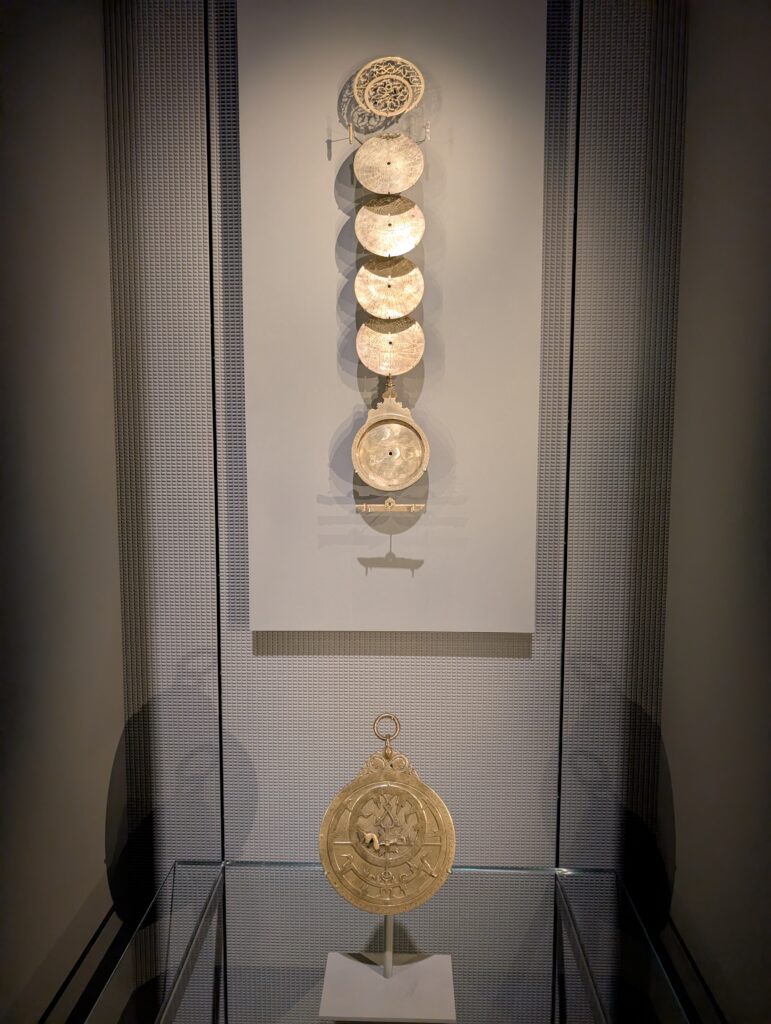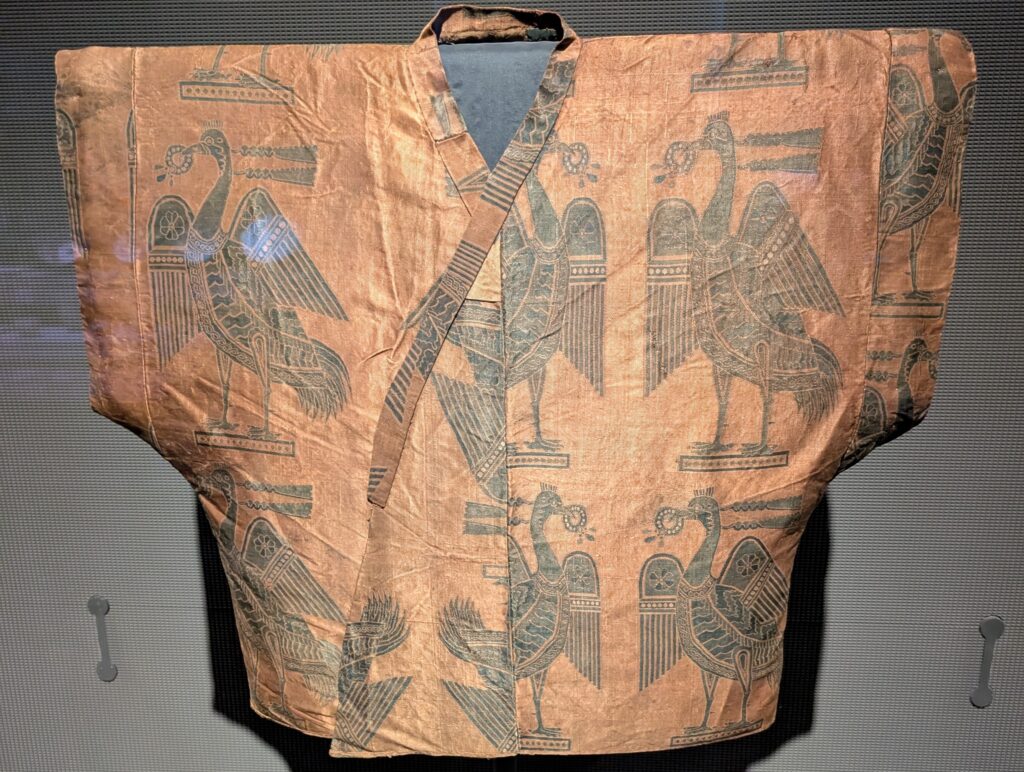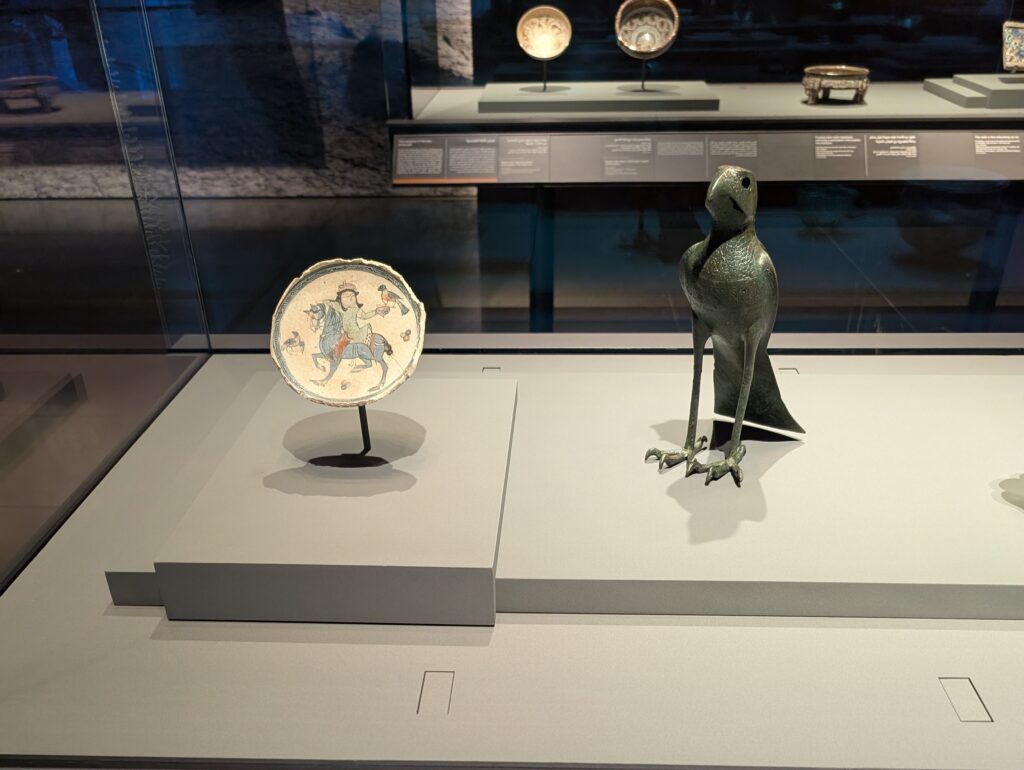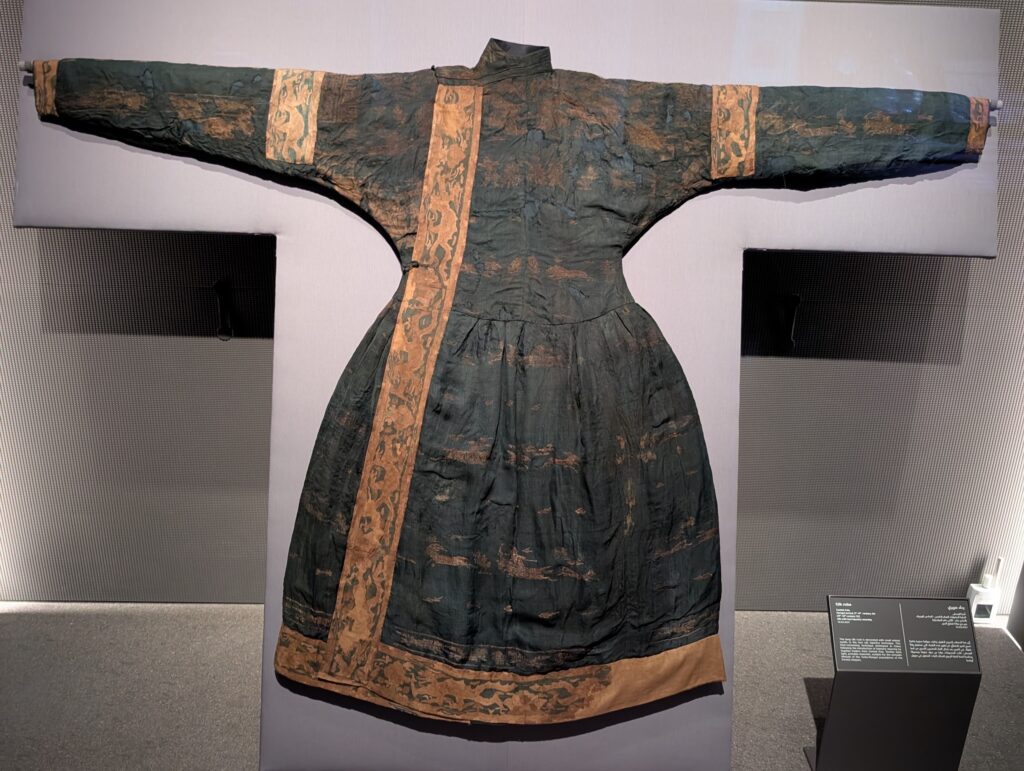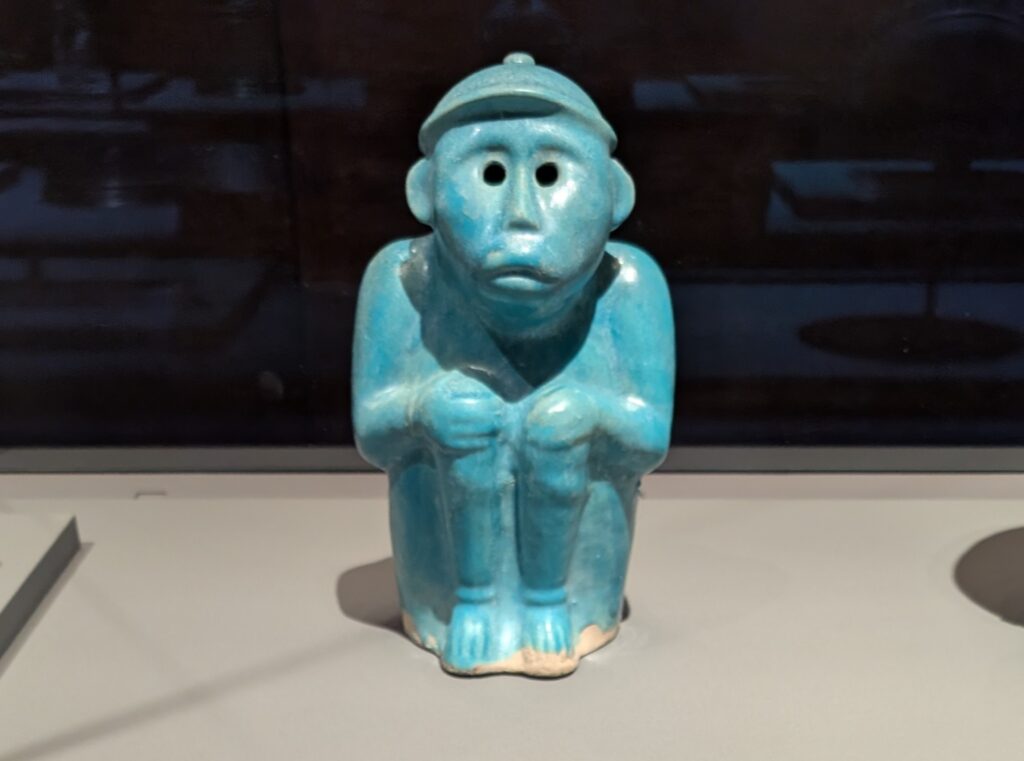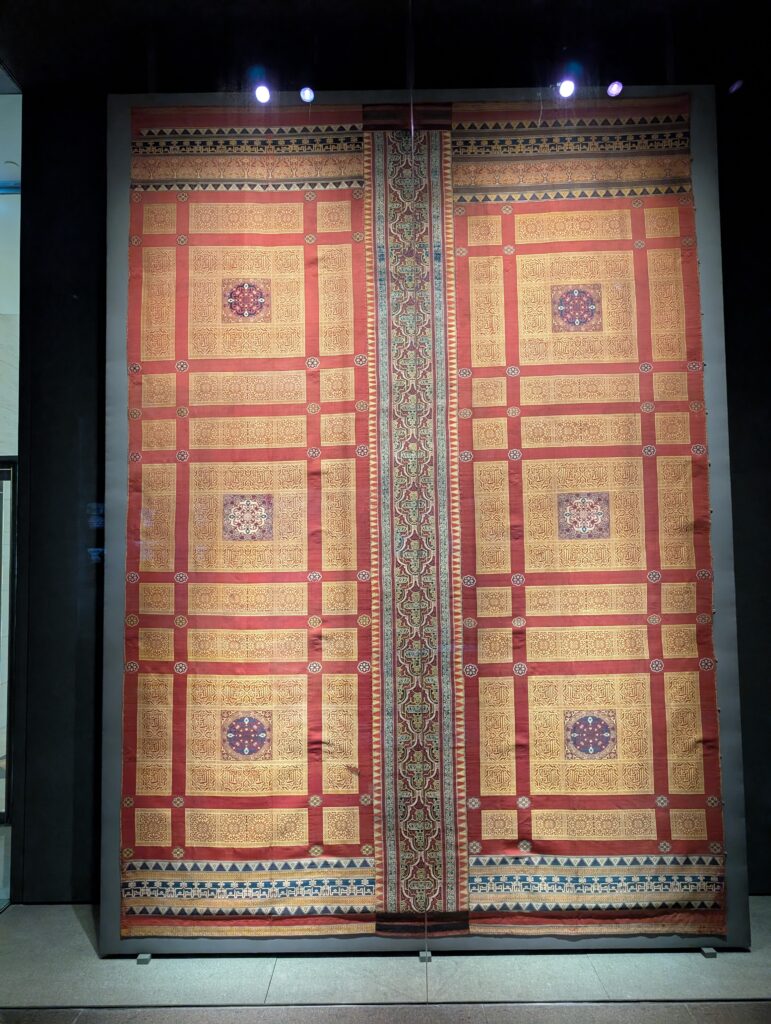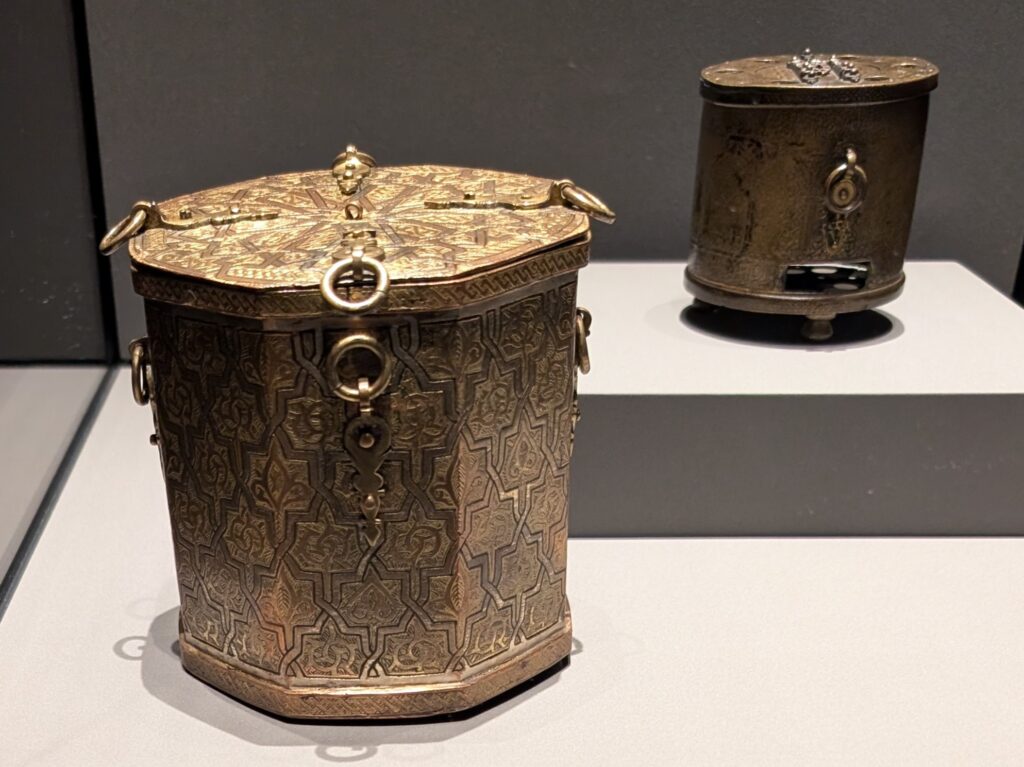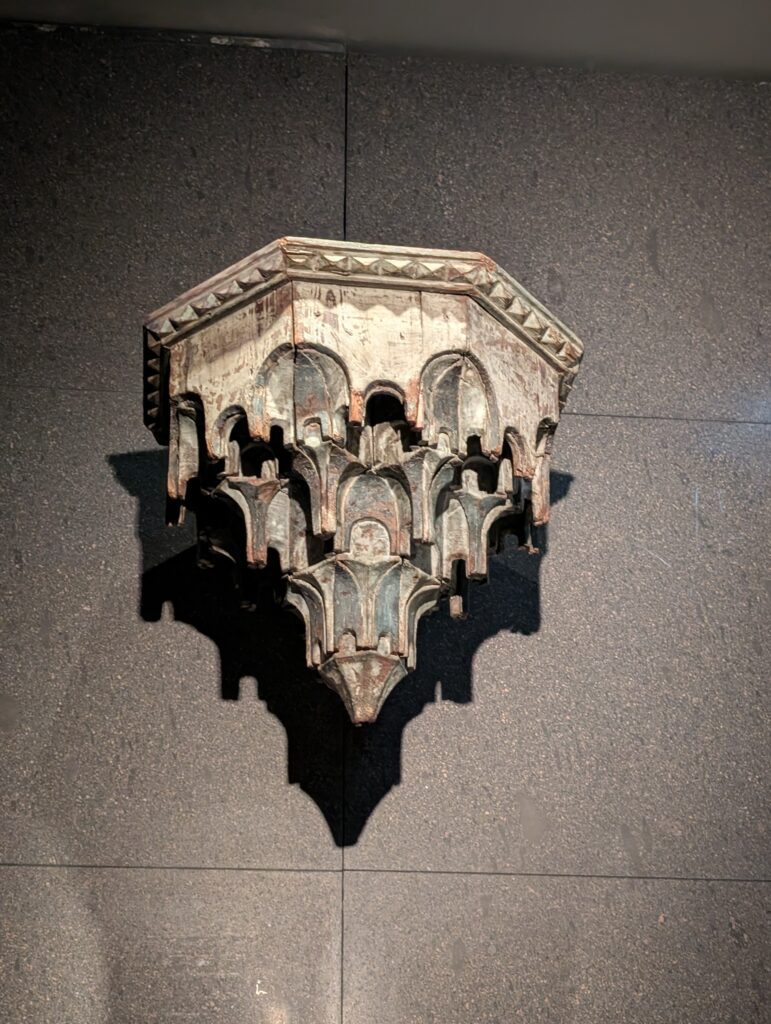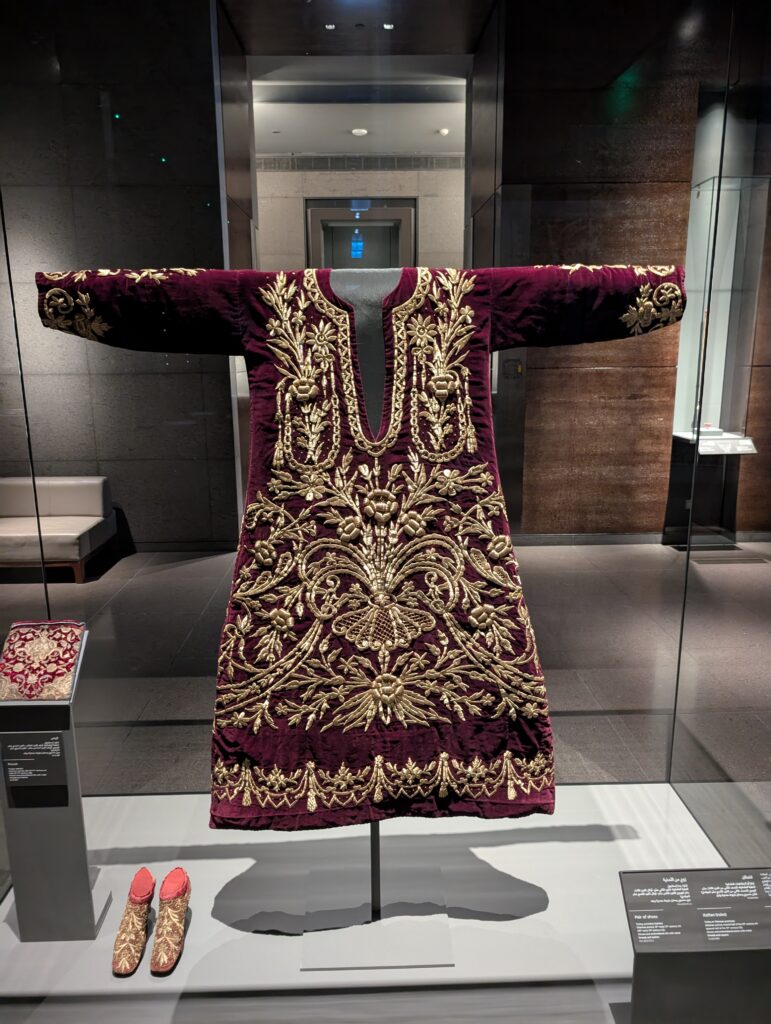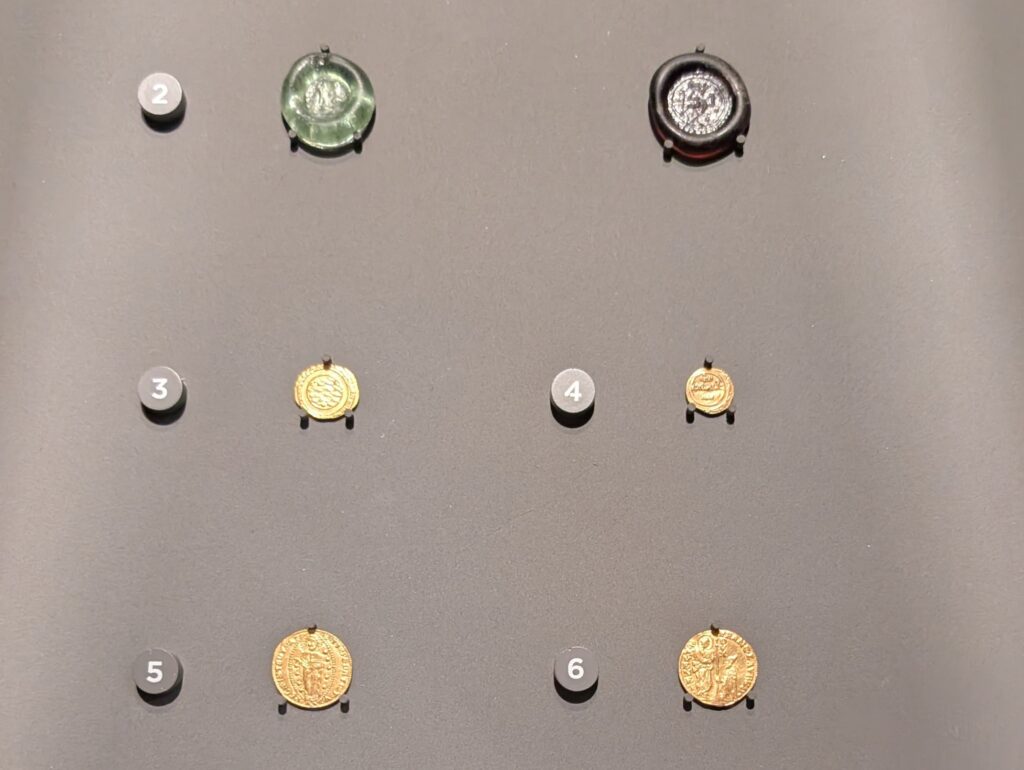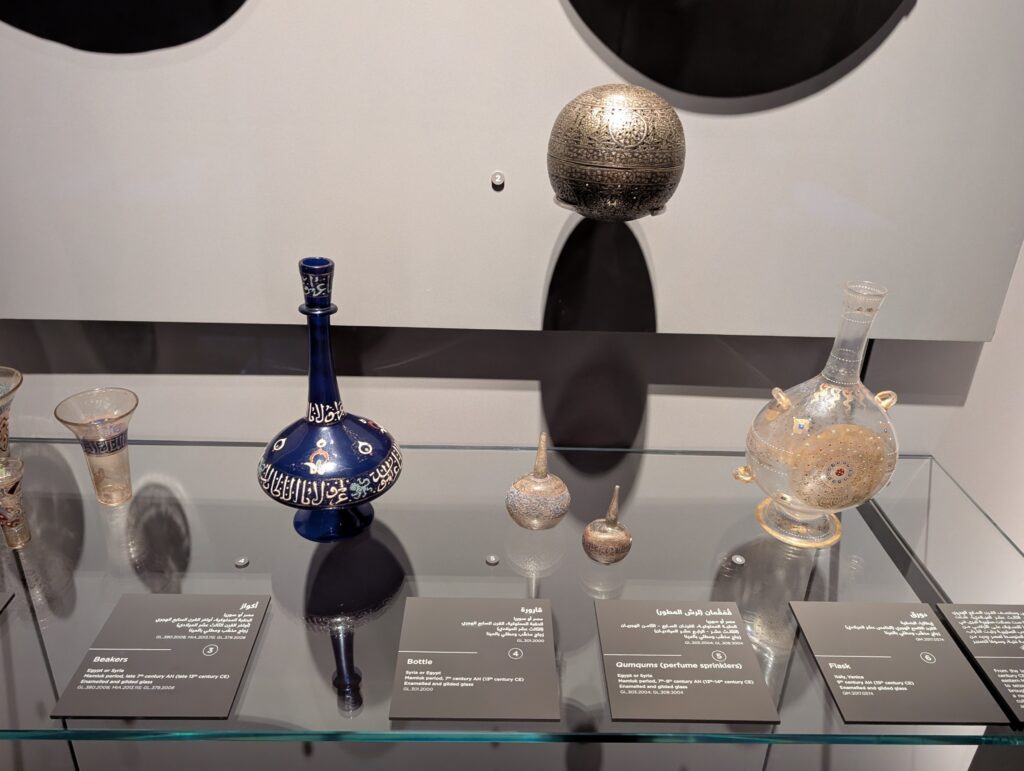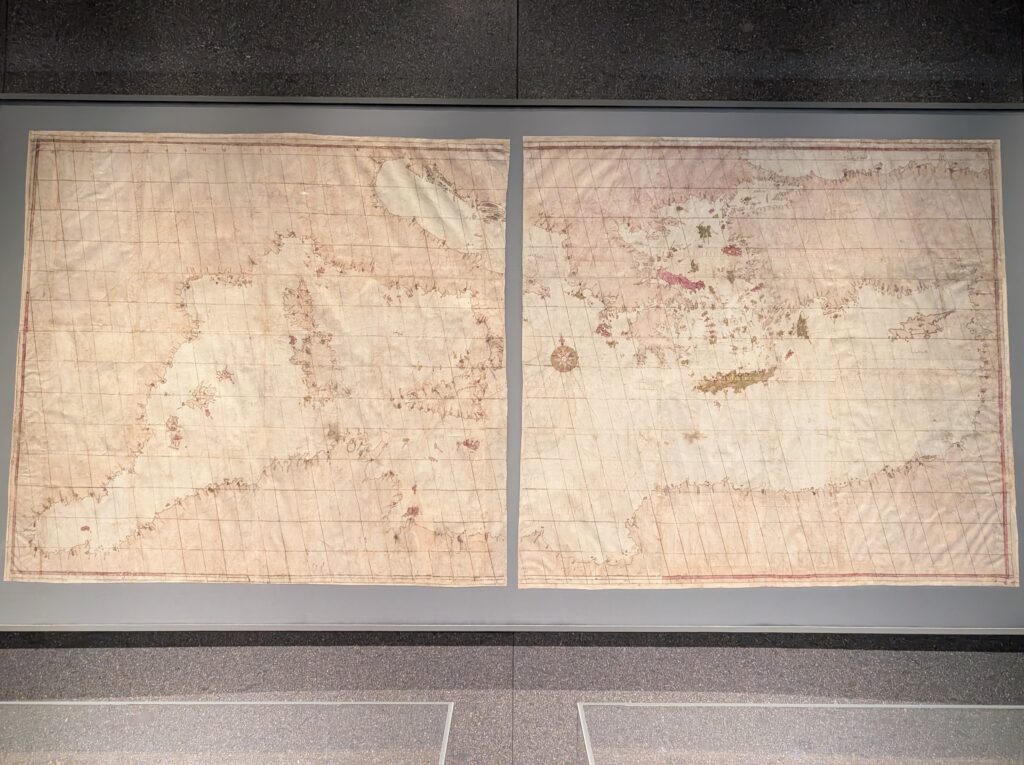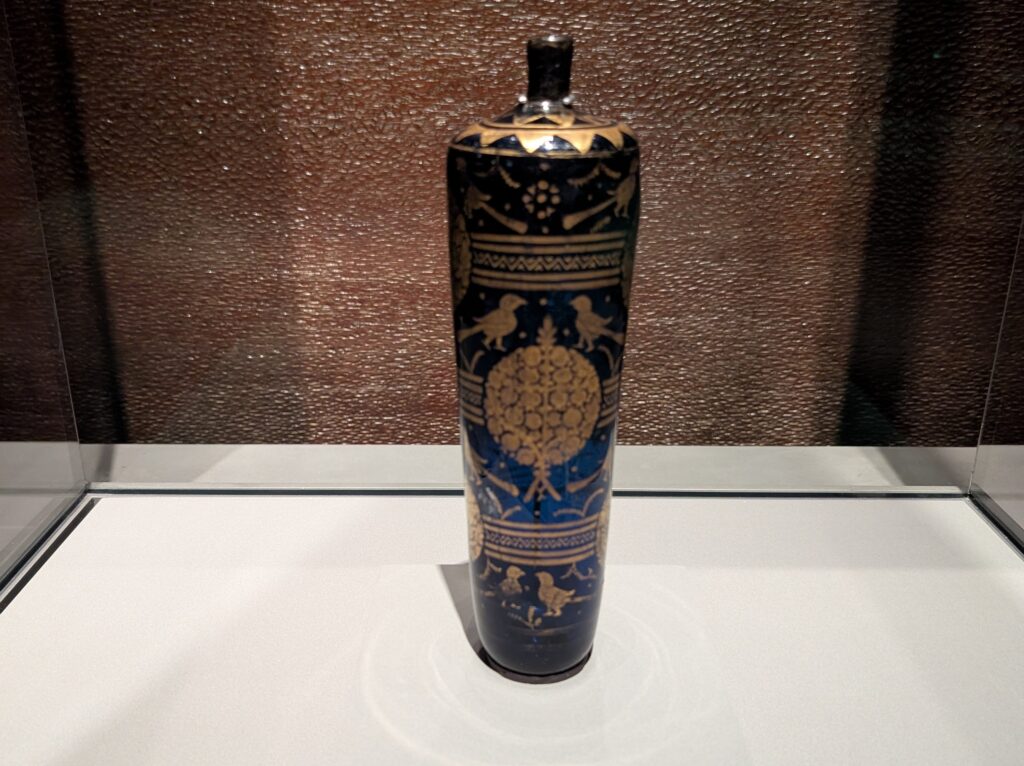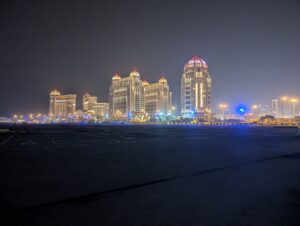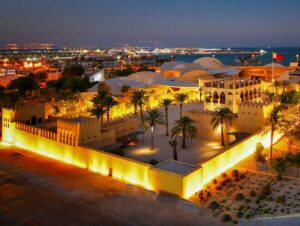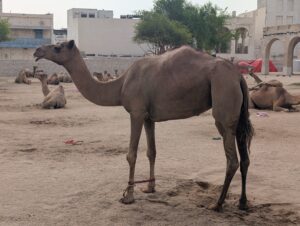Two Museums
Sports Museum, Islamic Arts & a Mall
The 17th would be my museum pass day. Since I got tickets to the sports museum and the Museum of Islamic Art, I thought I would spend most of the day perusing those attractions. The Villaggio Mall sits very near the 321 Qatar Olympic and Sports Museum. I figured I could squeeze that in between. Perhaps I would even have time to rest in my room during the heat of the afternoon. Nearly every place I visited on this trip was very hot. Countless times, I imagined myself returning after lunch to lounge in my room until supper, and then head back out in the slightly cooler evening air. That almost never materialized. I always found interesting things to do. I never felt completely comfortable “wasting” daylight lying on my bed in the conditioned air. In this case, the museums proved too enticing, and I never made it back to the Hyatt.
I ended up at the 321 Sports Museum almost as an afterthought, but it turned out to be a very compelling venue. The entry level of the museum introduces visitors to the history of sport, and how different pursuits evolved in different parts of the world through antiquity (antiquity having differing definitions based on geography and development of the world’s regions). They even made parts of this area interactive, which was kind of fun, if geared toward a younger audience. I practiced my archery, and attempted to climb a totem pole.
The most impressive section of this museum housed a collection of Olympic memorabilia. They had all of the winter and summer Olympic torches, from the time torches were first used. There is also an example of a medal from every Olympiad. The evolution of competition is examined as is the Olympic spirit. They have statistics on participation, and note some major political and terrorist events that took place at Olympic games. They show architecture, and even have a collection of the stuffed animal toys and mascots of the different Olympics and host cities.
The museum houses a remarkable collection of memorabilia tied to individual athletes, along with a brief biography of the athlete and summary of the significance of his or her accomplishments. The collection is not all-inclusive, and seems to be skewed in two main directions. First, there is understandably a disproportional number of display items from athletes from the Middle East. Many relatively obscure, only moderately successful athletes are recognized, often because they were the first or the best Arabic or Muslim participant in a given sport or event. Second, many of the highlighted athletes seemed to be drawn from either personal interest of the original collector or based on what artifacts could be acquired for display. So, while the collection is by no means complete, or balanced, it is still very impressive, containing items from Mark Spitz, Muhammad Ali, Joe Montana, and even a replica of the Jamaican Bobsled.
Of course, Joe Montana was no Olympian. In this part of the museum, the Olympic displays blend into heroes and pathfinders of modern athletics. They have Formula One cars, Serena William’s tennis racket, a Pele jersey, a pair of Jack Nicklaus’s shoes, and a Dama set, to name a few. The museum moved here to show how the rise of Qatar’s oil industry helped to fuel the country’s support of world class athletics. They also highlight Qatar’s more recent push to host major events, like professional tennis events, Formula One races, and even the World Cup Soccer tournament. They are lobbying hard, but look like a long shot, to host one of the Olympics in the 2030s.
(Continued)



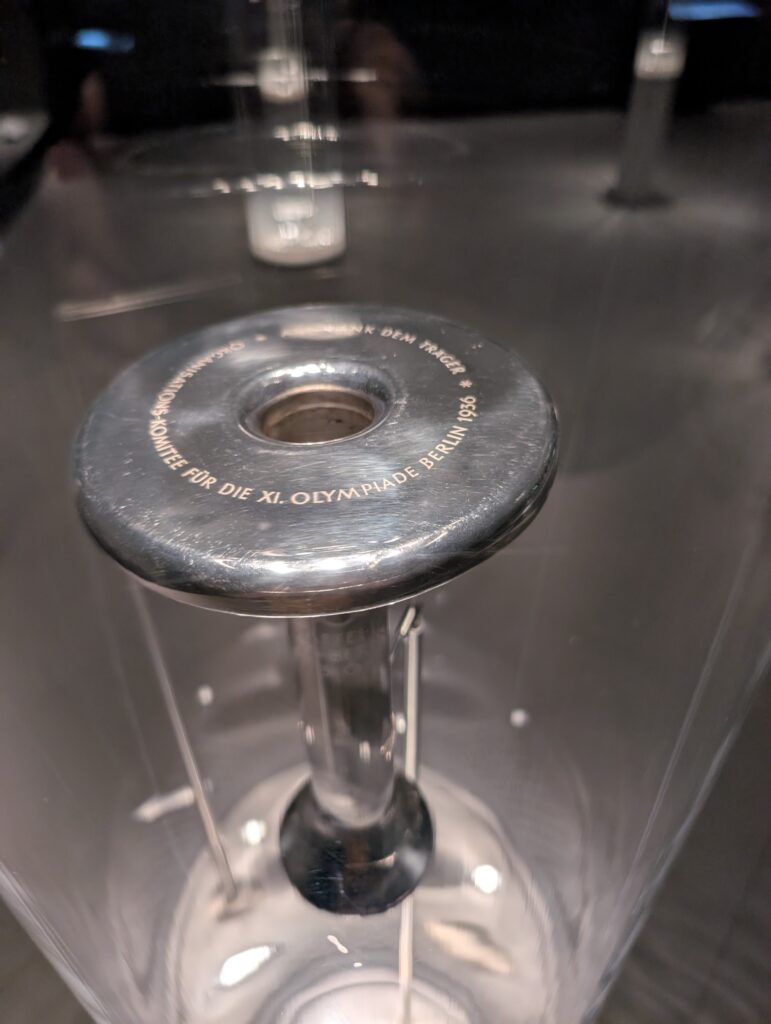

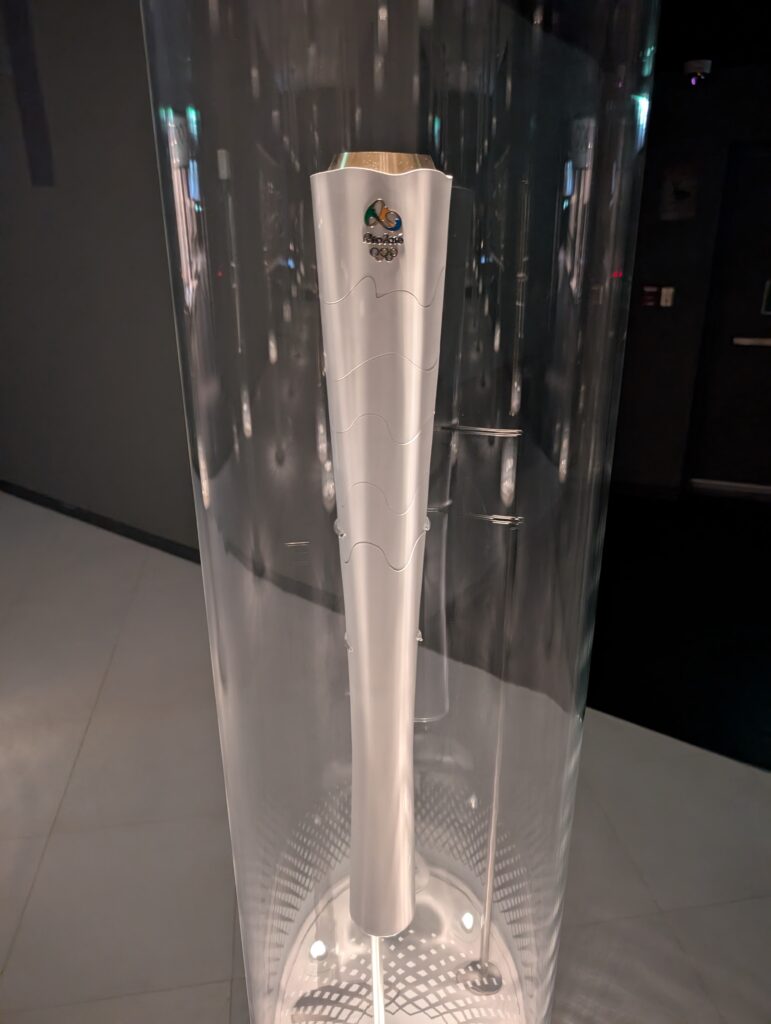
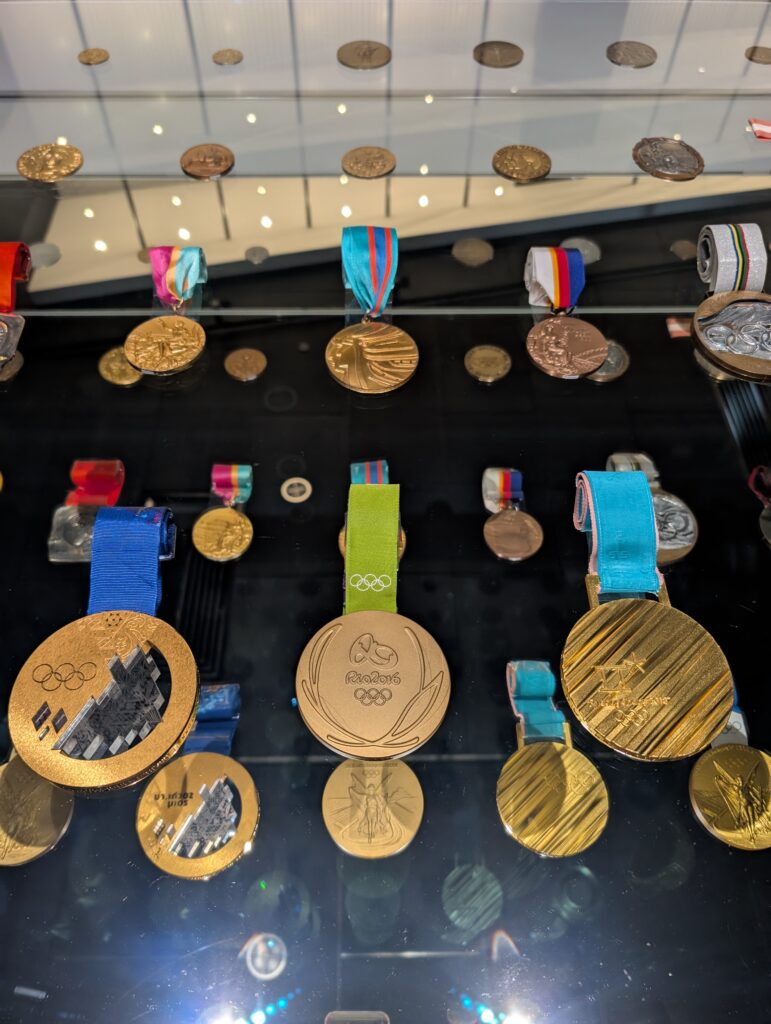
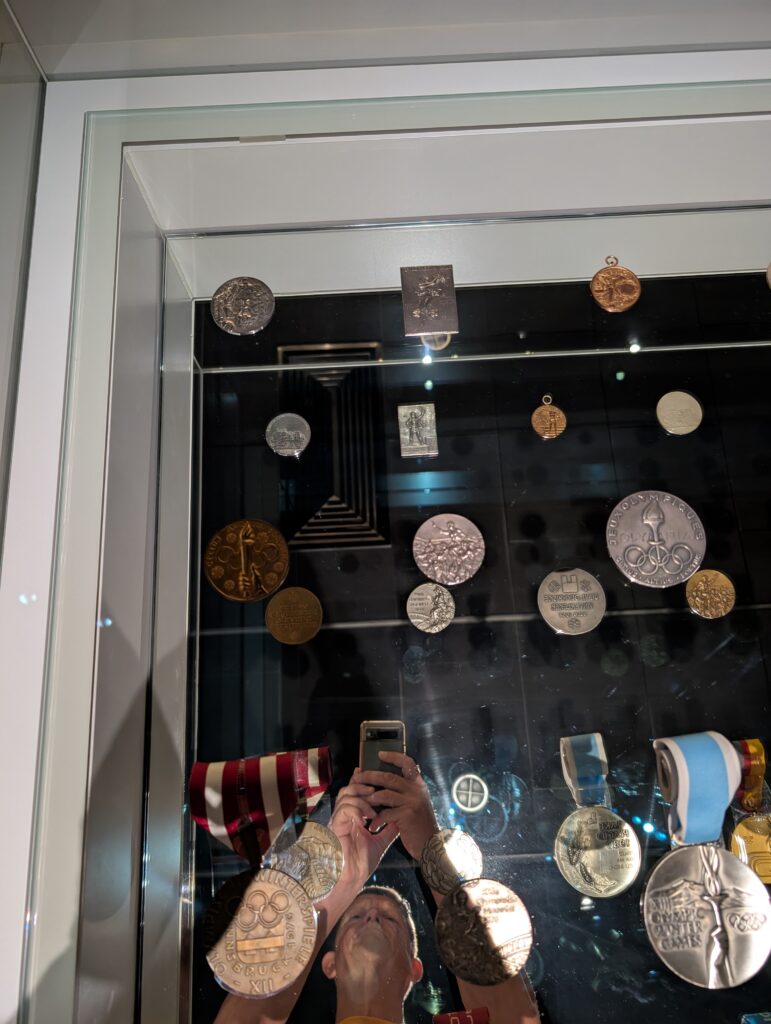

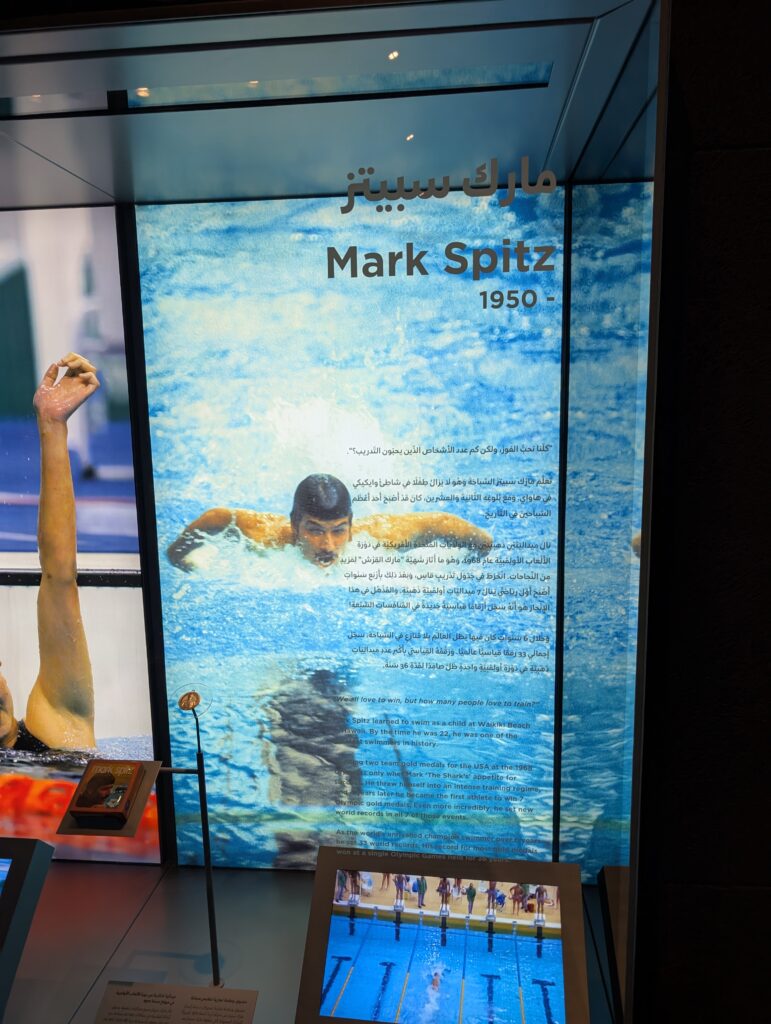
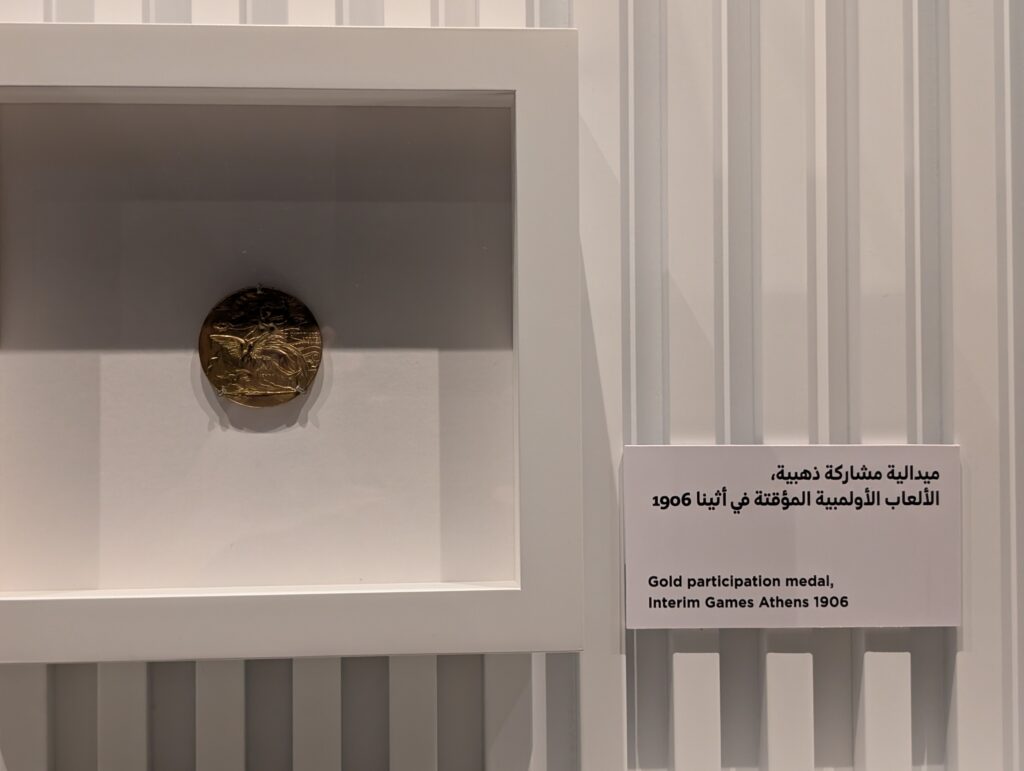

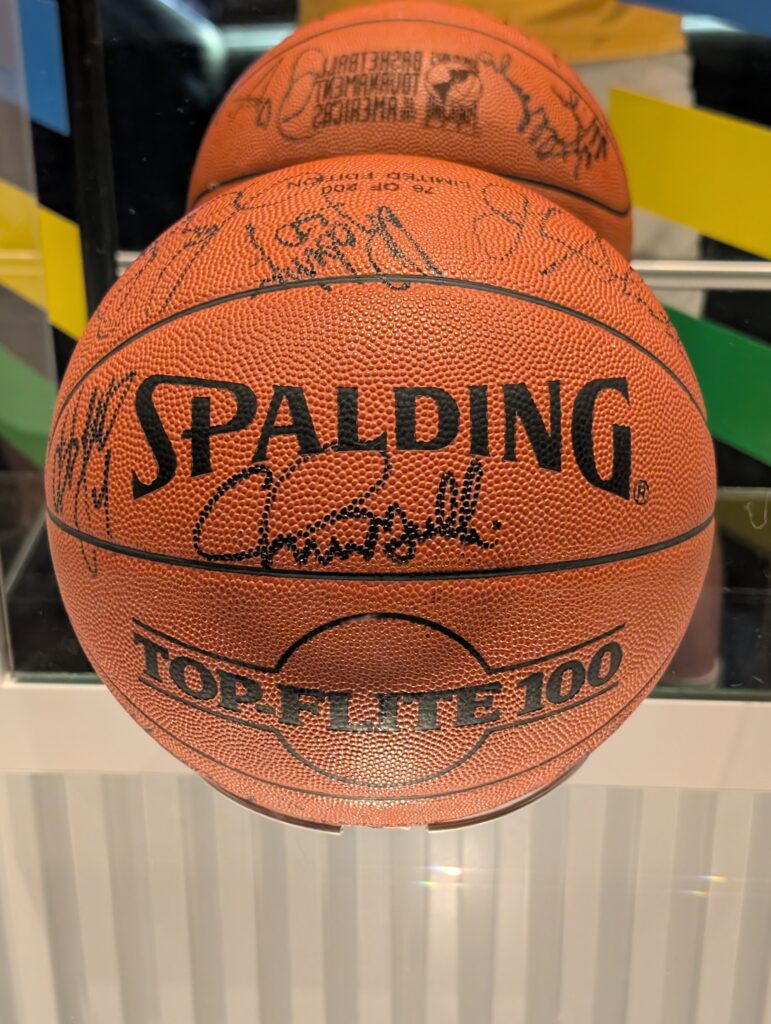
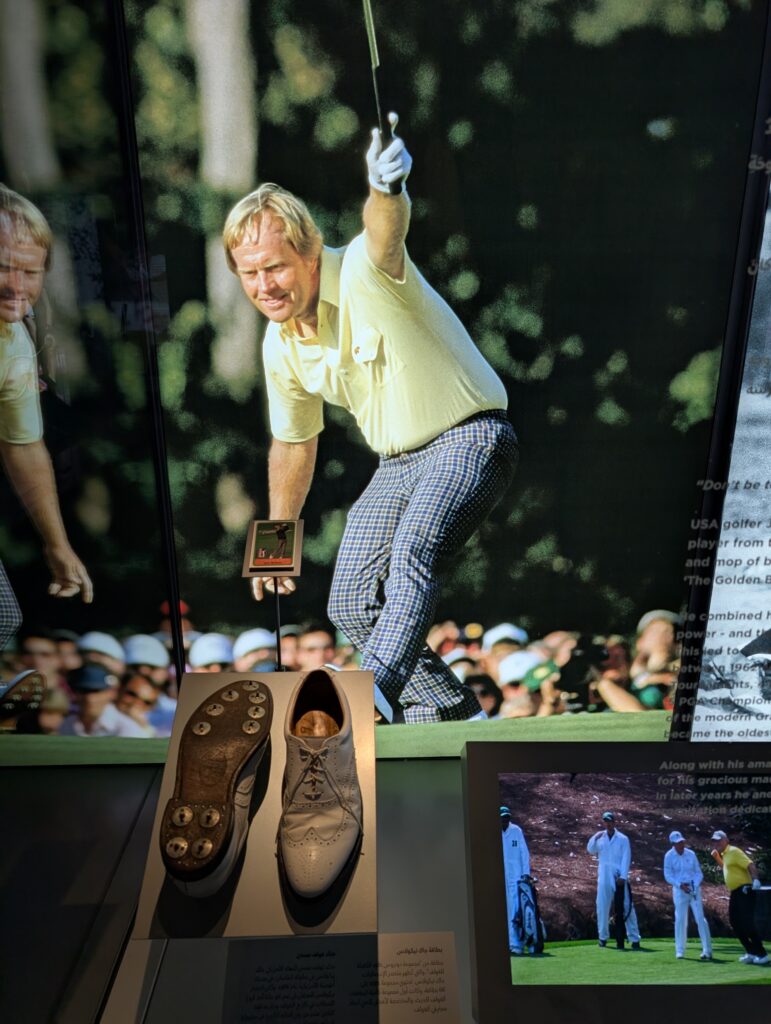
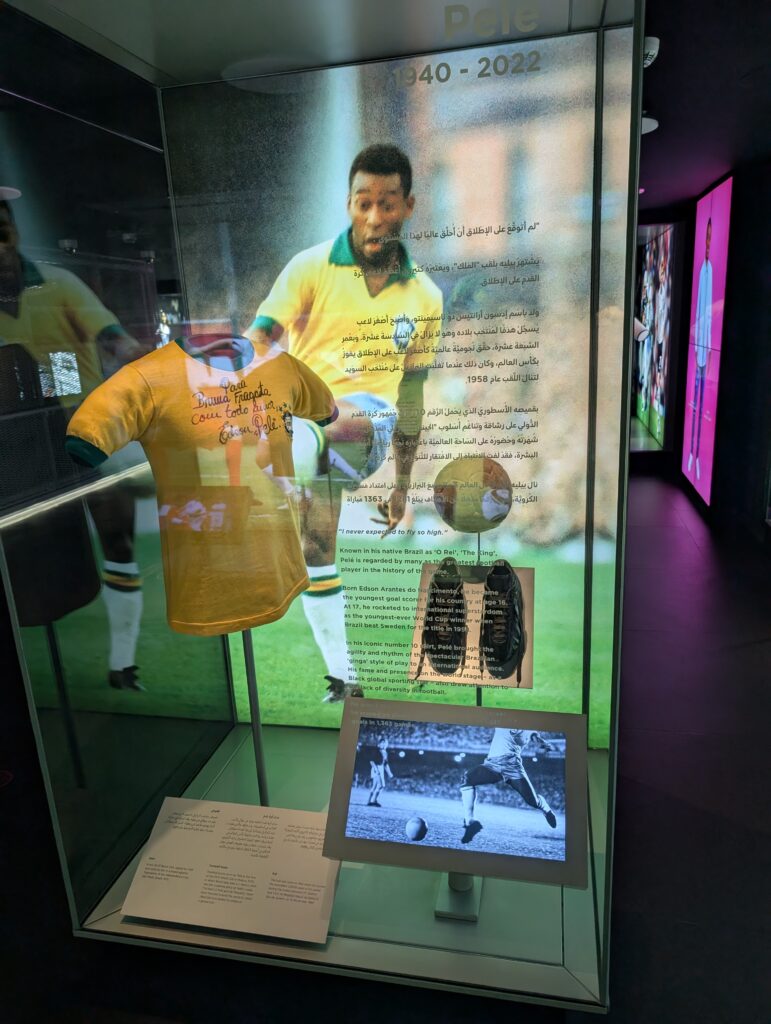

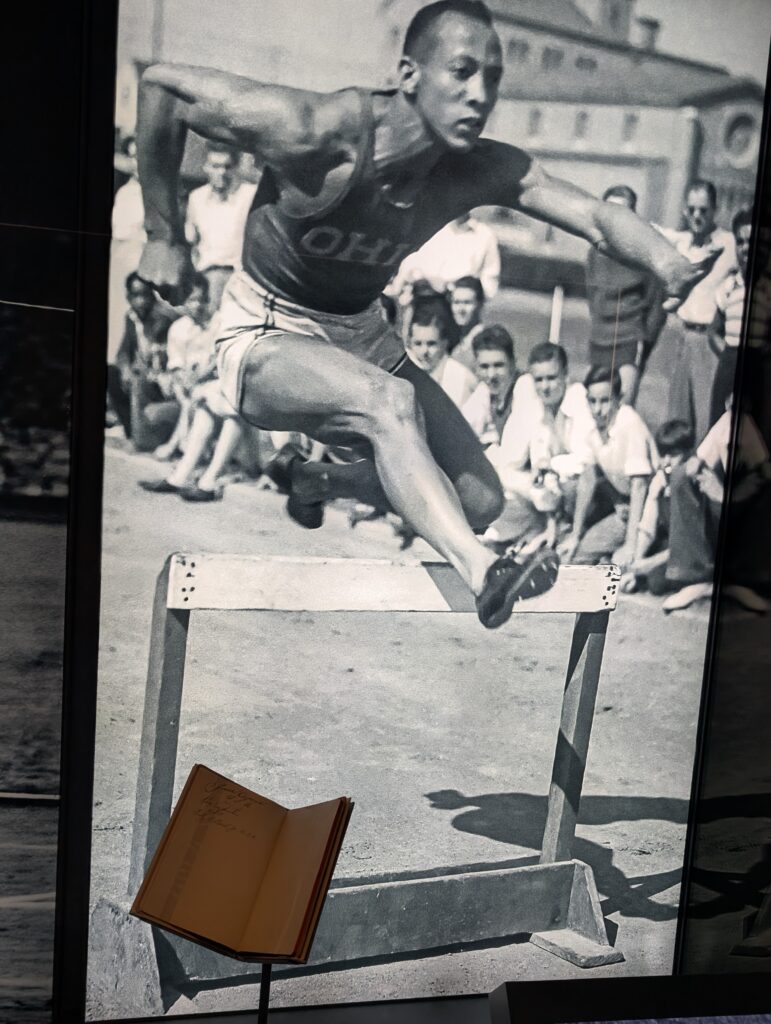
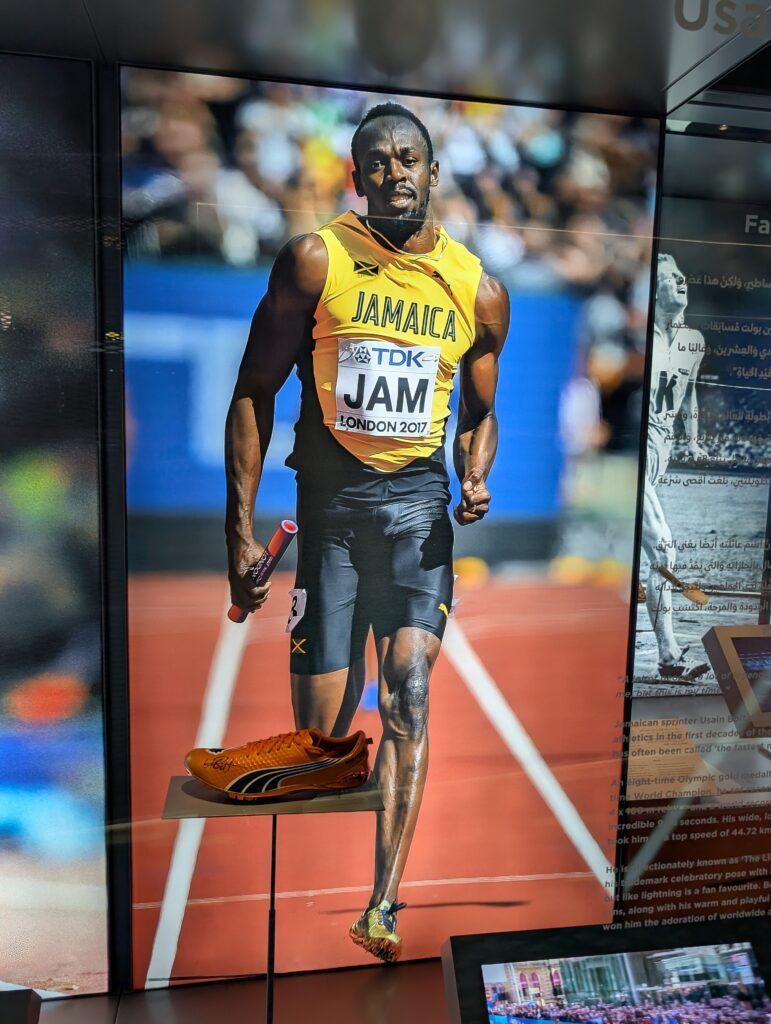
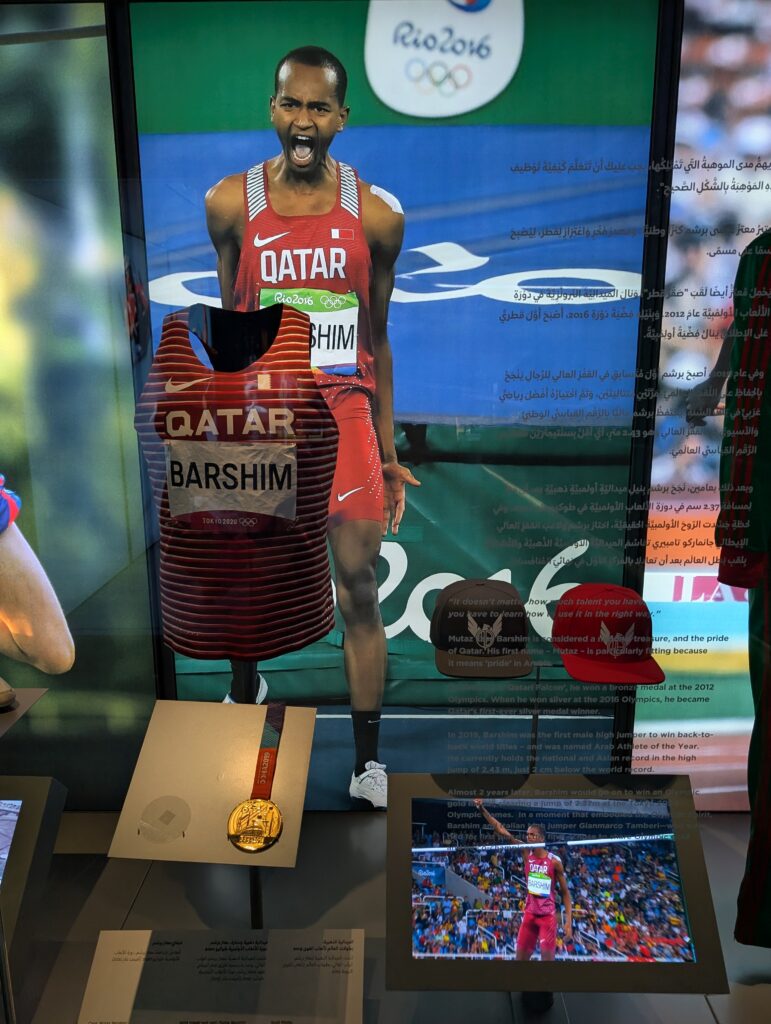
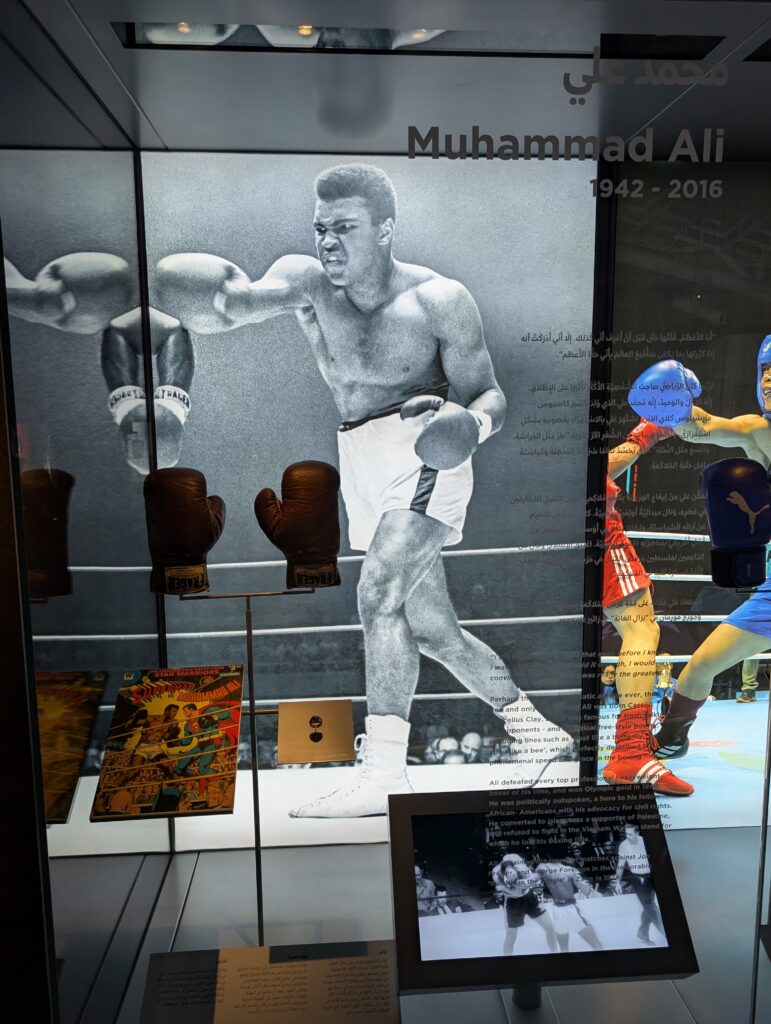

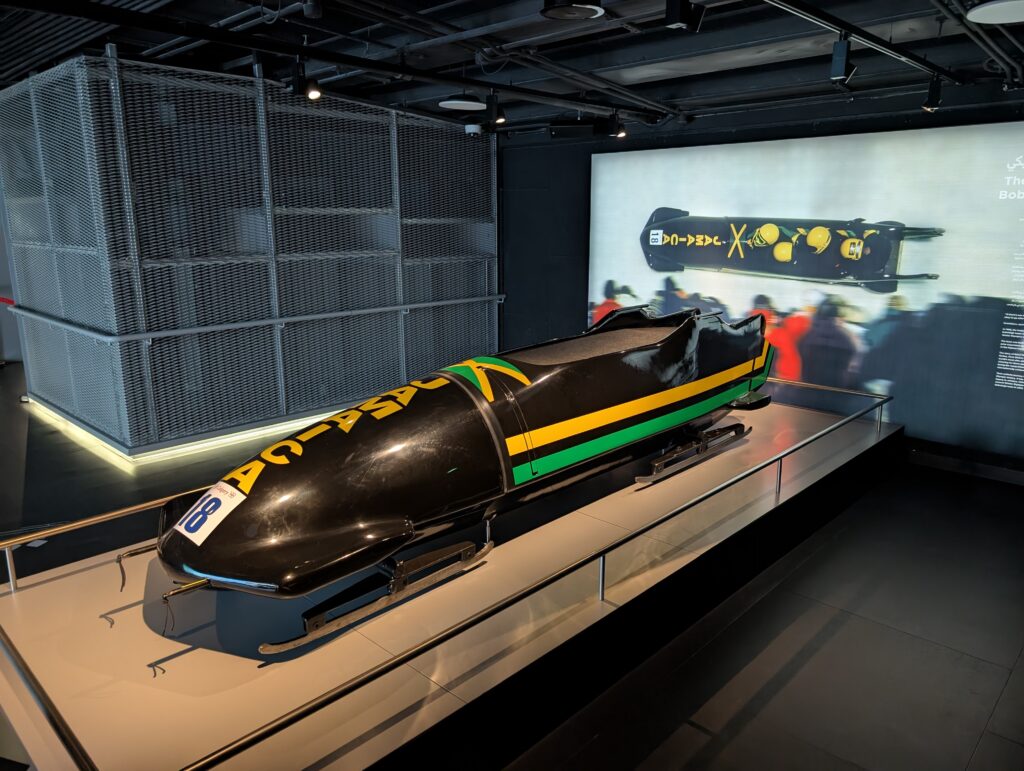
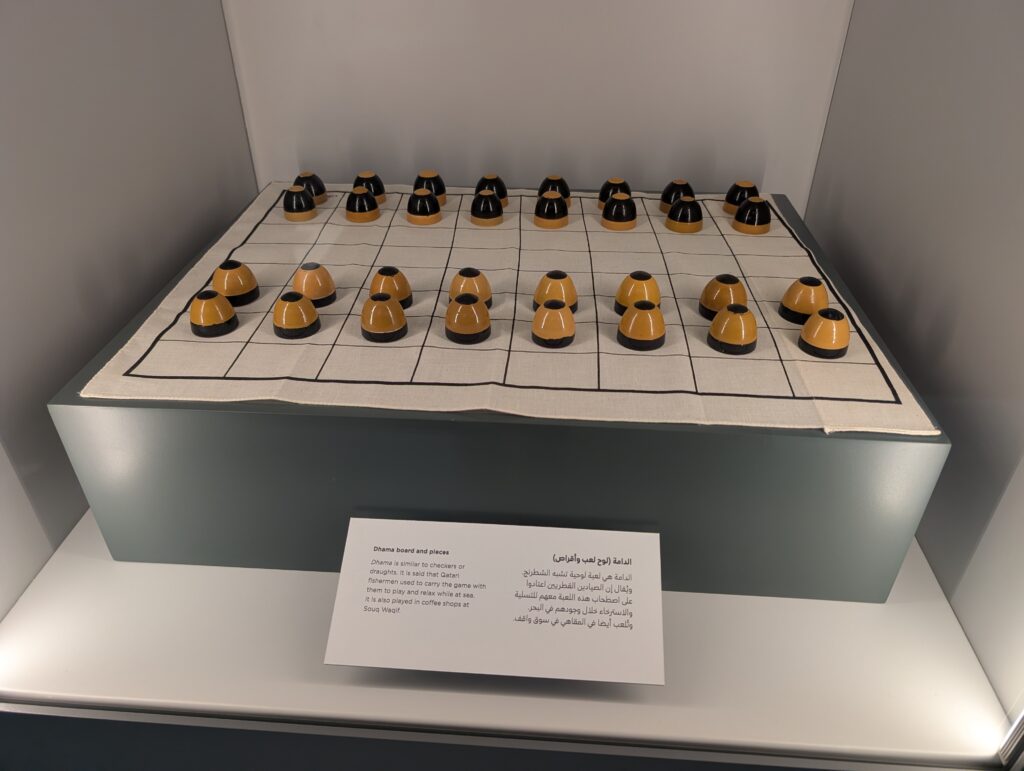



I walked past a strange tower shaped hotel that was attached by air conditioned tunnel to the Villaggio Mall. The mall is best known for its system of small canals and boats inside, with periodic bridges for pedestrians to cross over the waterway. Most of the shops sold high dollar items I was not interested in, but I did see that they had a Super Carrefour. I grabbed a couple of clothing items and some snacks from there before making my way back to the corniche, and then the Museum of Islamic Art.
I was not sure how much time I would spend in an Islamic art museum. I assumed a more narrow view of art than what is actually depicted. The Prado and the Louvre display some sculptures and a lot of paintings. The Museum of Islamic Art contains all sorts of different objects that could be defined as art in a broader sense. They have pottery, clothing, utilitarian items like armor and pieces of palanquins, rugs and carpets, headstones, markers, and even pieces of architecture, not to mention jewelry, ornamentation, and examples of calligraphy. It made for an interesting museum, one that occupied the remainder of my afternoon.
The greater part of the Museum of Islamic Art was divided by region. North Africa and Moorish Spain had significantly different interpretations of Islam over time than did the Arabian Peninsula, or Iran. Persian culture and practice, and art in particular, were shaped by Zoroastrianism and other Central Asian traditions. For several centuries, Turkey took the mantle of Caliphate in the form of the Ottoman Empire. Items produced there have their own distinctiveness. There was eventually a large Muslim population in what would become Indonesia and Malaysia. Their art and culture were also quite different than what you might find in Saudi Arabia or the Ottoman Empire. The museum was organized into rooms based on geography and chronology.
There are not all that many sculptures. For the most part, Islam eschews the creation of images that could be construed as idols. Most chess sets from the Islamic world feature abstract representational pieces, as images of royalty or animals were frowned upon. Likewise, images of people and animals are uncommon (though not completely absent) in Islamic household ornamentation. Many more motifs involving geometric designs or floral patterns adorn pottery, architecture, or household décor. There are nice examples of all these on display, with some explanation of how the local culture and evolution of Islam is reflected in the artifacts. As is often the case with art museums, I found it quite a bit more compelling than I anticipated. I ended up pacing myself to see as much of the place as I could before it closed. Ultimately, I saw everything in the permanent collections, and even made a slightly accelerated pass through the temporary display featuring food in Islamic life and culture.
(Continued)




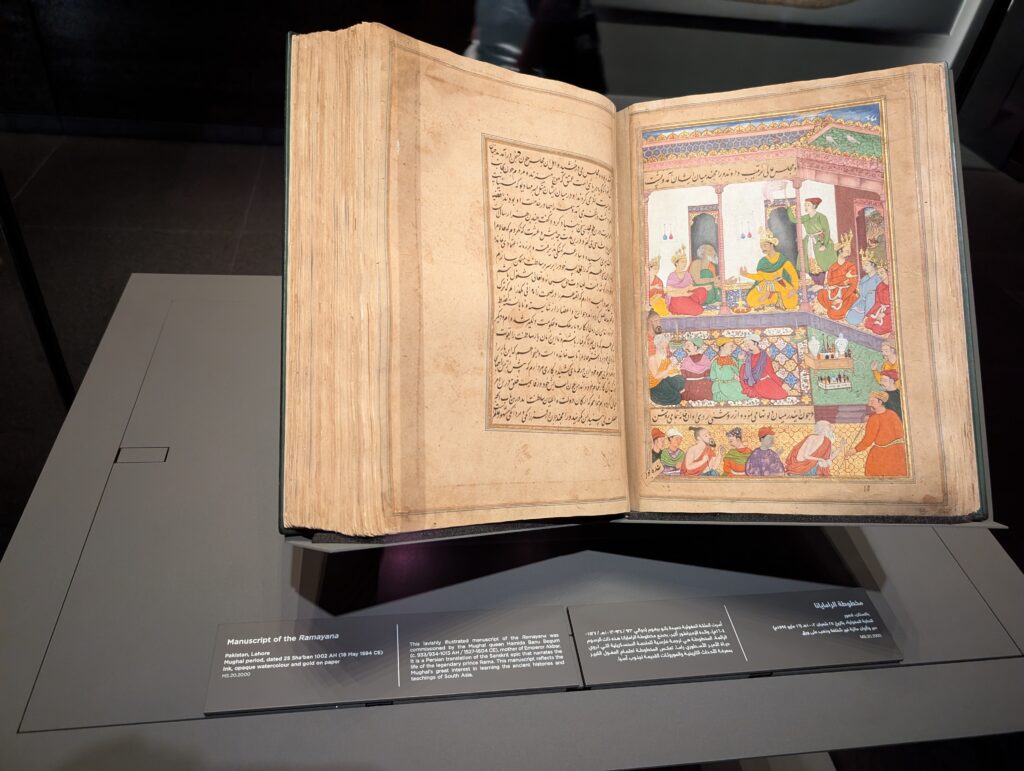



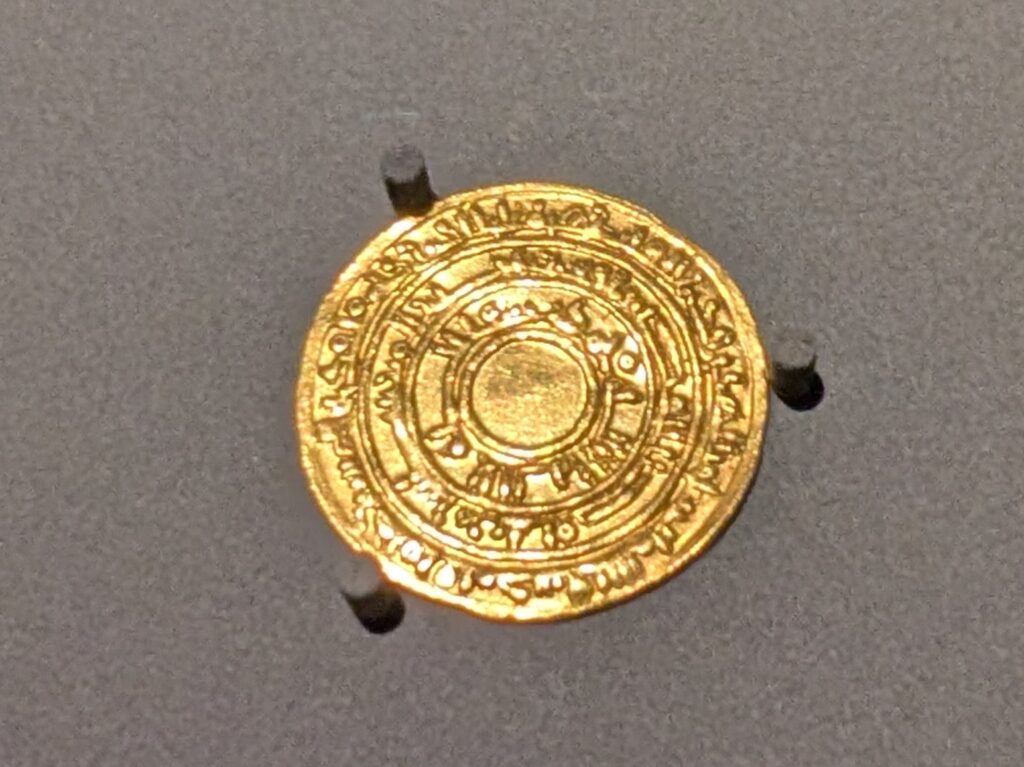
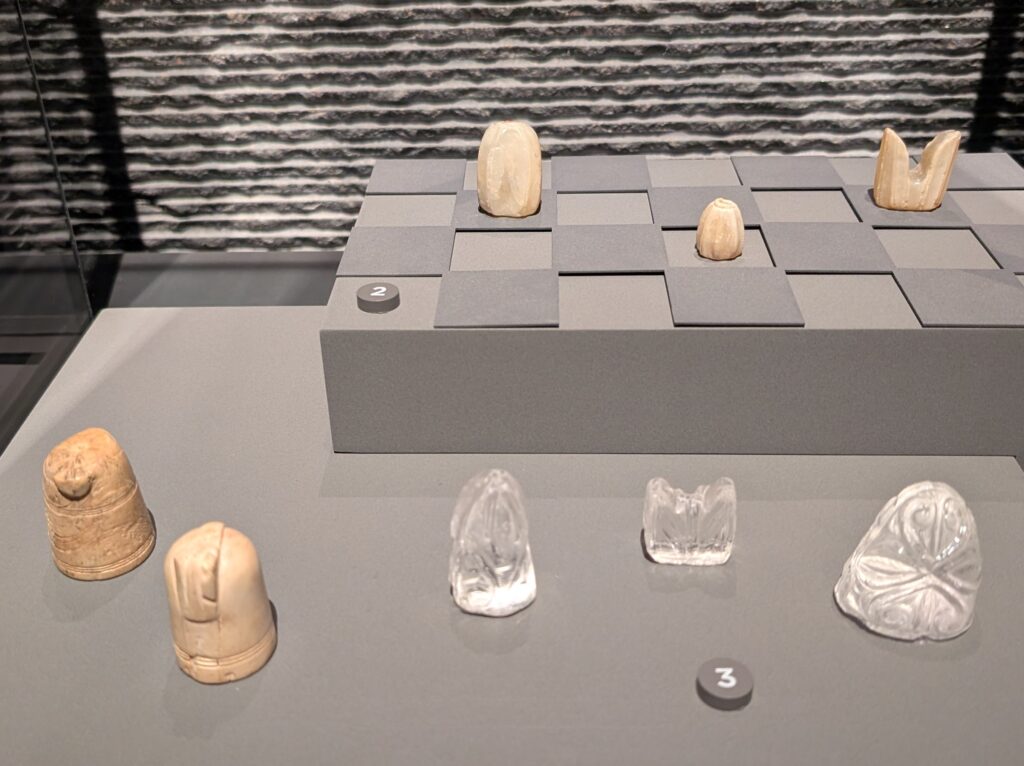
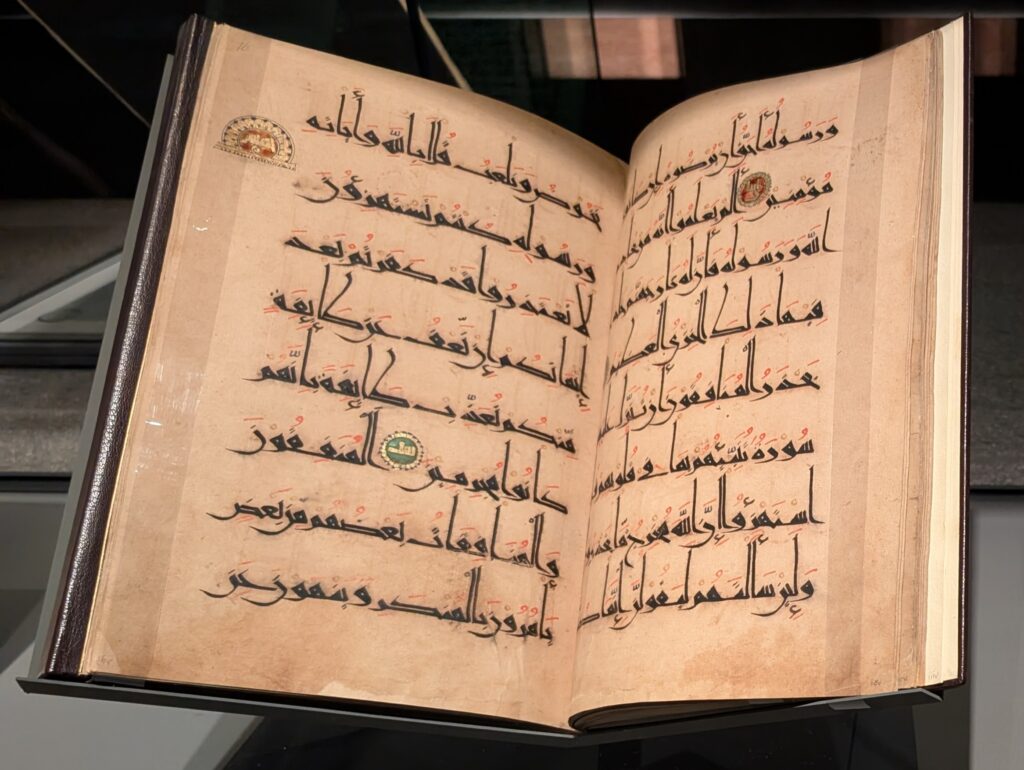



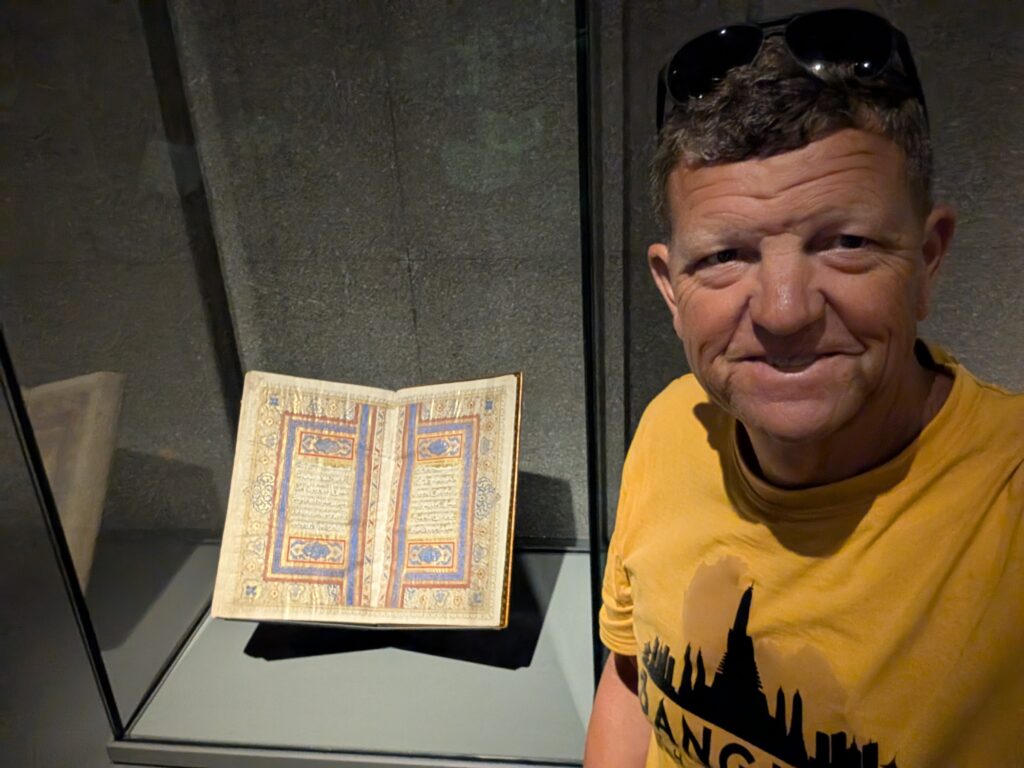
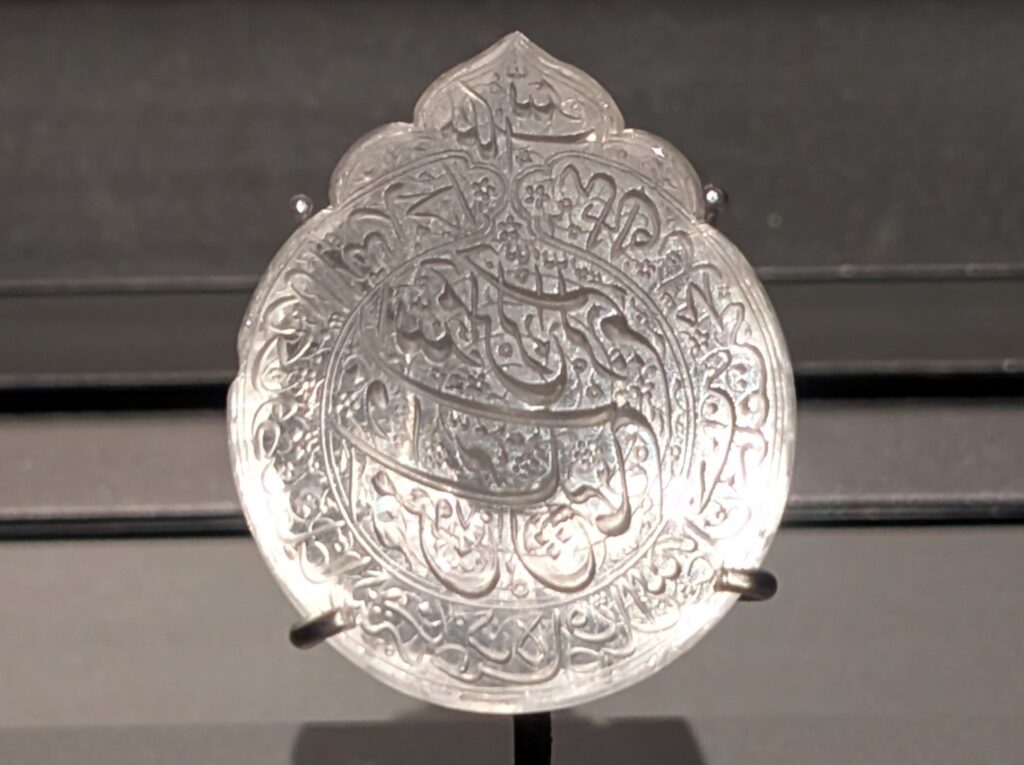
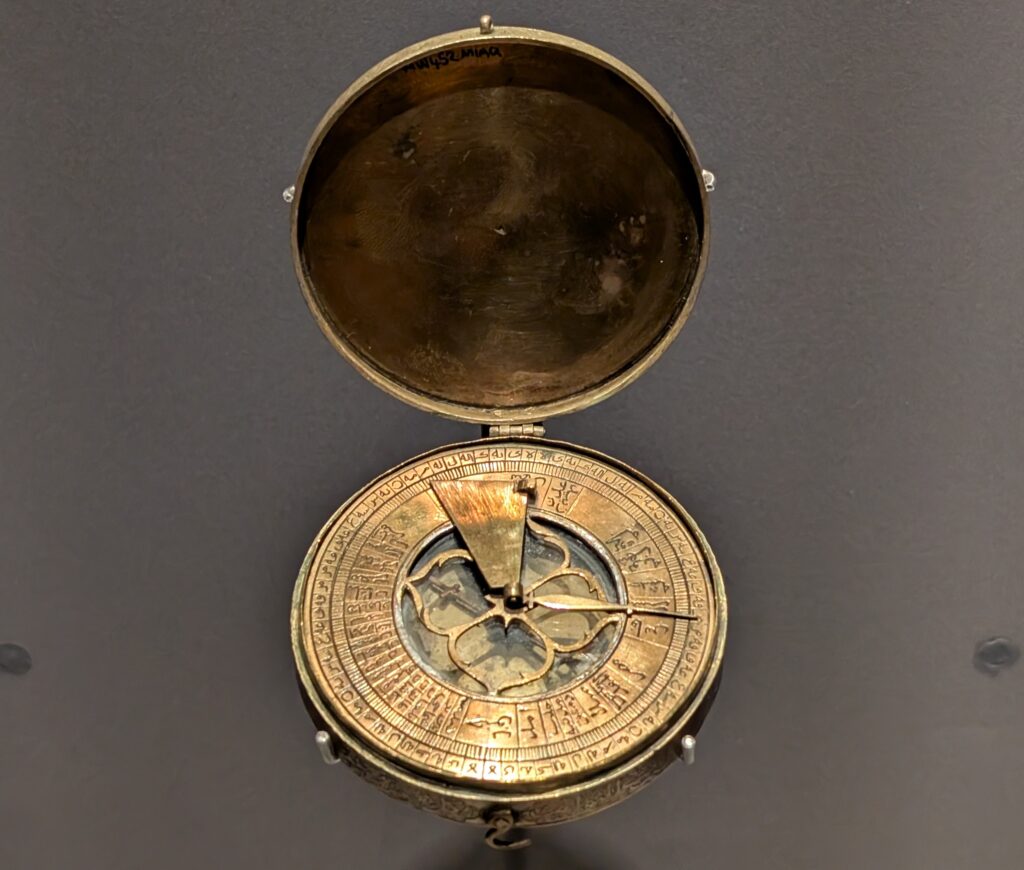
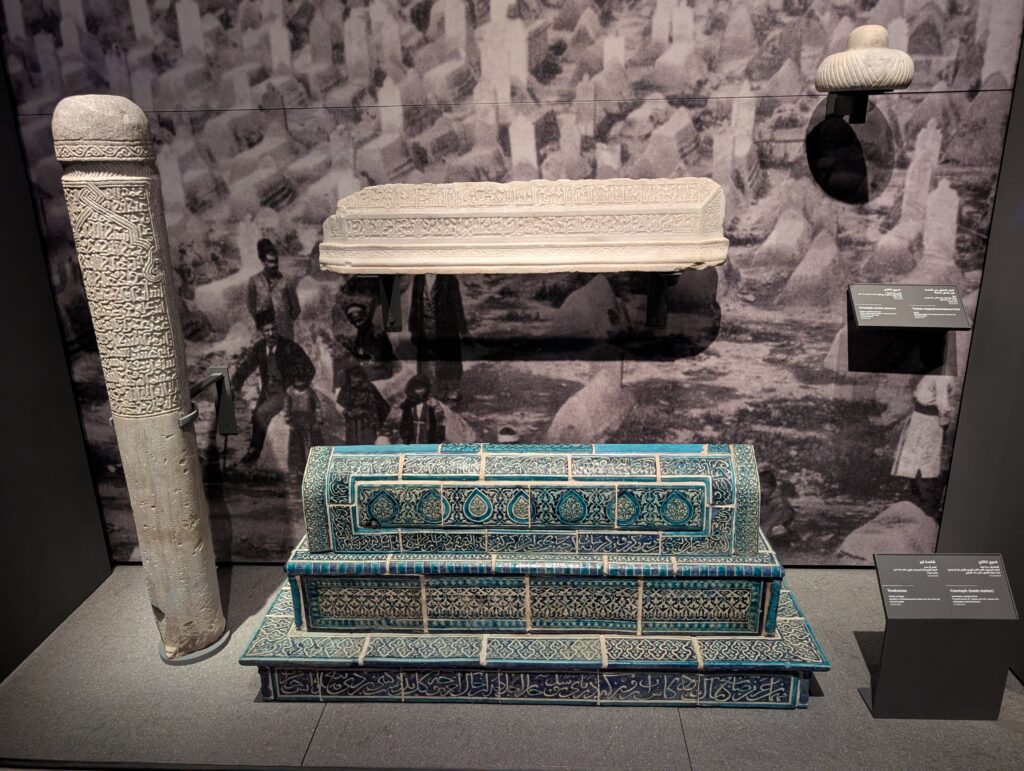

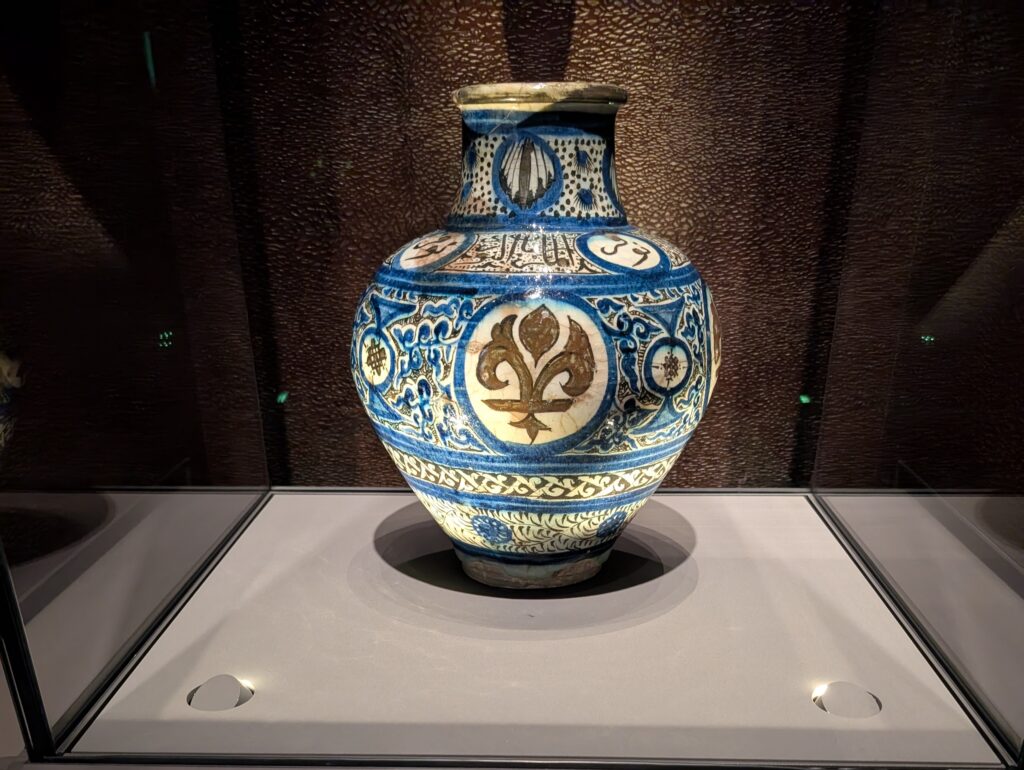
Perhaps ending the visit in a food display was a bad idea. I was hungry, anyway. The closest restaurants were all at least a couple of kilometers away. If I was going to have a long walk anyhow, I might as well find a place to eat in the Mina District. The Mina District is centered around the old Doha port. The area has been converted into colorful shops and restaurants, most of which are overpriced. During the off-season when I visited, most businesses were closed in the evening. What was still open was too expensive and touristy. I couldn’t find any affordable, appealing place to eat. It was too late and too far to walk to another neighborhood. I was on a pier, so I would have had to backtrack a couple of kilometers, and then hike another two or three just to get back to a neighborhood with any options. I buckled and Ubered to an inexpensive Arabic restaurant with good reviews. It was a wise choice, even if the Uber ate away at whatever savings I achieved from the cheaper restaurant. I was at least closer to the metro, and would not have to walk nearly so far to get back to the Hyatt after I ate.
That evening, I finally did what I should have done all along for food recommendations. I asked the foreign hotel employees not where they recommended I eat, but where they ate. Between that, and some other searching, I figured out that there are several cafeteria type eateries away from the tourist areas that are quite inexpensive. A few of these feature Arabic food, and some predictably offer Indian cuisine and other specialties attractive to Qatar’s foreign work force. I logged that information for later use.
